2014.07.14
Typhoon aftermath needs to be organized better
By E. Heinrich-Sanchez
Neoguri has passed us leaving record-breaking rainfall. On the East China Sea on the west coast of Okinawa, the waves were not as bad as during previous storms. The damage came from torrents of gushing rainwater finding its way to the sea. The red-clay sea that is. What ever measures we are taking to prevent red-clay run-off is not working.
 Many roads out of Yomitan were flooded, such as the road to Zakimi castle. Roads surrounding the Yomitan Town Hall were knee deep in water in some places. In Onna Village, Yamada, the roads were out towards Ryukyu Village and by the Yamada Community center. Route 58 was flooded here and there causing massive traffic jams. The Armed Forces Network announces the typhoon conditions as “Typhoon Condition One Recovery” only allowing emergency crews to assess damage, cleanup and then give the green light. As soon as the typhoon passed, people rushing to work dodging fallen trees, flooding and washed out roads found massive traffic jams. An accident in these conditions would add to the mayhem. I would strongly recommend that there was an ALL OKINAWA standard following the TC-1 Recovery. It always amazes me how well the Okinawa Electric Power grid holds up. We live right by the ocean and only suffered a few flickers here and there although our whole 6-story building shuddered and shook with the dense gusts making us pause from our hunkering. Older buildings did not do well.
Many roads out of Yomitan were flooded, such as the road to Zakimi castle. Roads surrounding the Yomitan Town Hall were knee deep in water in some places. In Onna Village, Yamada, the roads were out towards Ryukyu Village and by the Yamada Community center. Route 58 was flooded here and there causing massive traffic jams. The Armed Forces Network announces the typhoon conditions as “Typhoon Condition One Recovery” only allowing emergency crews to assess damage, cleanup and then give the green light. As soon as the typhoon passed, people rushing to work dodging fallen trees, flooding and washed out roads found massive traffic jams. An accident in these conditions would add to the mayhem. I would strongly recommend that there was an ALL OKINAWA standard following the TC-1 Recovery. It always amazes me how well the Okinawa Electric Power grid holds up. We live right by the ocean and only suffered a few flickers here and there although our whole 6-story building shuddered and shook with the dense gusts making us pause from our hunkering. Older buildings did not do well.
On June 29 and 30th the Expert Conference on Development of Island’s Sustainable Societies touched upon conservation of the Coral Reefs and sustainable development, the importance of introducing renewable energies in island communities, appropriate waste management. The last day of the conference focused on the impacts of climate change (Ecosystem-based Adaptation and Disaster Risk Reduction) ending with the side event on Education for Sustainable Development.
According to the summary prepared by the Ministry of Environment, main points of the chair’s summary (Dr. Makoto Tsuchiya, Profesor Emeritus, University of the Ryukyus): Recognizing the necessity of collaboration for the perspective of “people, sea, industry and livelihood” in coral reef conservation 1. With experts and the local community 2. Collaboration among various stakeholders 3. Collaboration across various levels of communities = To further promote collaboration, the importance and significance that institutions for coral reef research / conservation to hold various domestic / international training programs and to share and disseminate information were recognized.
In my opinion, I have seen through the years how these conferences reach high levels of possibilities yet do not always make it to the field or local municipality. How can we work towards implementation before those who are in charge of their respective government divisions are transferred away to other sections, and not always follow through on the declarations and promises for sustainable development.
Some of the programs implemented in small island countries are in many ways more advanced that what are the operating procedures for local coastal management.
“The Panelists have agreed that sustainable island society requires sustainable waste management.”
“Taking advantages of ecosystems no only reduces risks of disasters or contributes to adapt to climate change, but also enhances functions of ecosystem services, which eventually contributes to create sustainable communities effectively and efficiently”
Dr. Shigeyuki Baba wrote in his profile: My hard lessons learned from coastal natural hazards
“One of the reconstruction plans of the Great East Japan Earthquake is to build seawalls in 400km long and 14.7 m in maximum height. The height of the seawall in Taro, Miyako was 10 m, but it could not prevent the tsunami. I learned many things from the Earthquake. One of those is “artificial structures such as concrete seawalls do not always protect our lives and lands.”
Many reports of 2004 Indian Ocean Tsunami and other tsunamis said that mangrove forests reduced tsunami’s hydraulic pressures. We must recognize the importance of coastal ecosystems such as mangrove forests that take protective roles against coastal natural hazards.”
I wonder if this proven expert data and findings will be considered in the future development of Okinawa and Japan. Soft solutions although affordable do not always provide the lawmakers with “pork belly politics” of concrete and dump trucks, which provide the teeth to devour the public works budgets regulated by spending as opposed to sustainable use. How can we get both? How can we get sustainability to creep into these public works projects?
The side event summary theme: Education for Sustainable Development (ESD) activities – for preservation and wise-use of local resources by Dr. Junko Oshima, University of the Ryukyus:
1. “As this year marks the final year of “the UN Decade of ESD”, Japan have to promote our ESD activities much more both as the proposing country of ESD and the host country for UNESCO World Conference on ESD.”
2. Regional problems in Okinawa are equivalent to the islands’ regional problems. Promoting ESD with various stakeholders in the region that the place for ESD practice contribute to solve the islands’ regional problems in the world.”
A full summary will be available on line soon. Taking advantage of this expert meeting with a focus on collaboration, it is an excellent time for Okinawa to apply as a United Nations University (UNU) Regional Center of Expertise (RCE) on Education for Sustainable Development (ESD). Stakeholders from the community collaborating at different levels in order to bring ESD to the daily table. We need to have our children grow up with ESD principals and to achieve that teachers need to get on board too. The only way to do this in a timely manner is for ALL of us on island create this network of expertise on ESD from the local Boards of Education, government, business and institutions of higher learning. The I Love Okinawa Campaign® is taking the initiative to get our foot in the door on this last year of the decade. I ask for everyone’s support to encourage teachers and boards of education, principals join the UNESCO Schools Network and end the decade with a BANG. It is time for Okinawa to join the UNU-RCE for ESD as we formulate what needs to be done from 2015.
Comments welcome to edo@okinawaocean.org

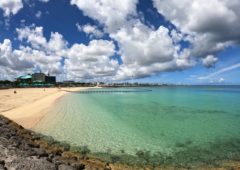 2024.04.10
2024.04.10 2024.01.31
2024.01.31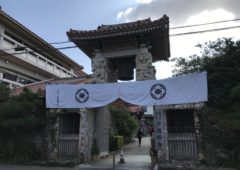 2024.01.02
2024.01.02 2023.12.27
2023.12.27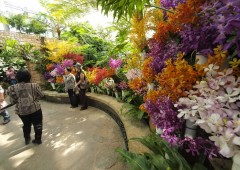 2023.11.16
2023.11.16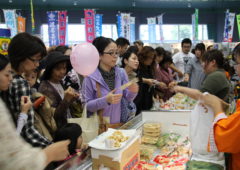 2023.11.14
2023.11.14 2023.11.10
2023.11.10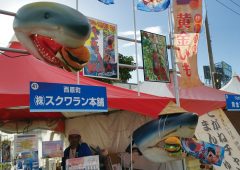 2023.10.26
2023.10.26 2023.10.16
2023.10.16 2023.09.14
2023.09.14






